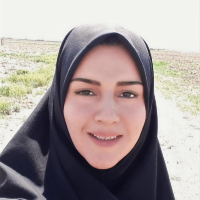Investigating the effect of planting density, corm size and planting depth on the quantity and quality of corm obtained from saffron corm multiplication farms.
In order to investigate the effect of planting density, corm weight and planting depth on the quantity and quality of corms obtained from saffron corm production fields, an experiment in the form of a factorial split plot in the form of a randomized complete block design with three replications at the Agricultural Research and Training Center and natural resources of Razavi Khorasan (Gonabad research station with latitude 34 degrees 21 minutes north and longitude 58 degrees 41 minutes east) was carried out in the crop years of 2017-2018 and 2018-2019. In this research, planting density treatment (at four levels of 60, 90, 120 and 150 corms per square meter) in the main plot and factorial planting depth (at two levels of 15 ± 2 and 25 ± 2 cm from the soil surface) and corm weight (at two levels) level of 4±1 and 8±1 g) were located in the sub-plot. The results showed that higher density increased the number of daughter corms per square meter and the total weight of daughter corms per square meter and decreased the average fresh weight of a single corm, the ratio of the total weight of harvested corms to the planted corms and the coefficient of corm multiplication. In addition to this, the increase in the weight of mother corms and surface planting caused an increase in the number of daughter corms, the average fresh weight of a single corm, the total fresh weight of all corms, and the multiplication factor. The double interaction effect of density × corm weight on the number of daughter corms, the total fresh weight of all daughter corms, the interaction effect of density × planting depth on the average weight of a single corm and the ratio of harvested to planted corm weight and the interaction effect of corm weight × planting depth On the number of daughter corms in the second year, the average fresh weight of a single corm and the total fresh weight of all the corms per square meter were significant only in the first year. Based on this, the effect of increasing the weight of mother corms on improving the fresh weight of daughter corms at a depth of 15 cm was more than that of 25 cm. In general, it seems that at least in the fields that are cultivated with the aim of obtaining seed pods in the first years, using a density of 120 pods per square meter using standard mother pods (that is, the average pod weight) 8 grams) and surface planting (i.e. planting depth of 15 cm) is recommended, but for functional farms, larger mother corms have a relative priority only in the early years, and with the age of the field, the importance of its effect decreases. Based on this, it seems that it is possible to use a different strategy with a combination of less depth and especially more density to compensate for the effect of stem weight and achieve more performance overall.
- حق عضویت دریافتی صرف حمایت از نشریات عضو و نگهداری، تکمیل و توسعه مگیران میشود.
- پرداخت حق اشتراک و دانلود مقالات اجازه بازنشر آن در سایر رسانههای چاپی و دیجیتال را به کاربر نمیدهد.


